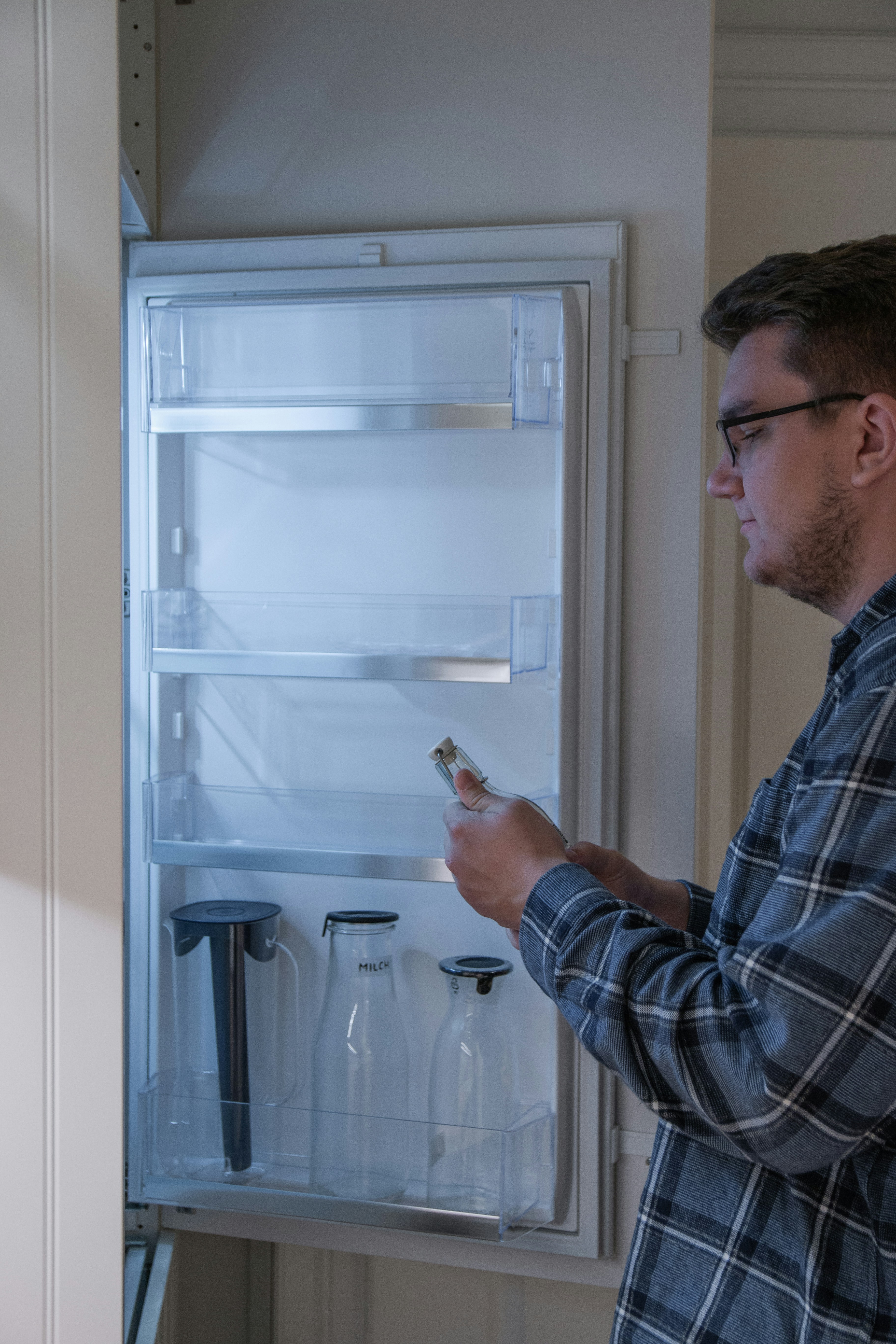Back
Jan 24, 2025
5 Ways AI Improves First-Time Fix Rates in Field Service

Justin Tannenbaum
he game for field service. By analyzing real-time IoT sensor data alongside historical service records, these systems can predict equipment failures before they happen. They track key performance metrics and flag unusual patterns, sending alerts to service teams so they can take action right away.
For example, Salesforce employs AI to predict equipment issues, helping teams schedule maintenance ahead of time. This approach avoids last-minute emergencies and highlights how this tech can make a big difference in field service.
Why Predictive Diagnostics Matters
Predictive diagnostics brings a range of benefits to field service operations, including:

The real power of predictive diagnostics lies in its ability to process complex data, identify patterns, and predict maintenance needs. This ensures technicians show up ready to solve problems, shifting field service from reactive repairs to proactive strategies. The result? Higher first-time fix rates and lower operational costs.
When a service call is unavoidable, technicians arrive equipped with the right tools and parts, thanks to detailed diagnostic insights provided beforehand. This approach significantly reduces downtime, keeping customers up and running without major interruptions.
AI for Field Service: Boost Efficiency with IFS.ai Solutions

2. Intelligent Scheduling: Optimizing Technician Deployment
Predictive diagnostics help identify issues before they escalate, but it’s intelligent scheduling that ensures technicians are sent where they’re needed most, and at the right time.
Scheduling to Reduce Travel Time
AI-powered scheduling tools are changing how field service teams operate. These tools use real-time and historical data to plan routes and schedules more effectively. By factoring in traffic patterns, technician availability, and job urgency, they cut down on travel time and allow technicians to focus more on solving problems. The result? More service calls completed in a day and better first-time fix rates, as technicians spend less time on the road and more time addressing issues.
Effects on Fix Rates and Resource Use
Shorter travel times and smarter resource allocation lead to tangible improvements. For example, companies using AI-driven scheduling report an 85% first-time fix rate, compared to 77% for those without such systems [3]. These gains come from better deployment decisions and more efficient use of resources.
Here’s how it impacts key performance areas:

Companies like Salesforce and Microsoft Dynamics 365 Field Service are already leveraging AI for smarter scheduling. According to research from the Aberdeen Group, organizations using these tools saw a 12% drop in mean time to repair [3]. This highlights how intelligent scheduling directly boosts service quality and efficiency.
Up next, we’ll dive into how real-time support systems further empower technicians to resolve issues effectively while on-site.

3. Real-Time Support Systems: Assisting Technicians On-Site
Real-time support systems, powered by AI, are transforming how technicians handle on-site tasks. By offering immediate assistance tailored to the situation, these tools help improve first-time fix rates and make repairs quicker and more precise.
Instant Access to Technical Resources
AI-driven systems provide technicians with instant access to technical resources via smart devices. This eliminates the need for bulky manuals or repeated support calls. Features like smart part identification, symptom triage, and service history lookup ensure technicians can quickly diagnose and resolve issues.
"AI frees up technicians' time. With more support and less distractions, mobile workers can focus on higher-value activities - even driving business growth through upselling and cross-selling" [1].
Hands-Free Tools for Efficiency
Voice-activated tools and mobile apps allow technicians to retrieve repair instructions, document tasks using voice notes, and consult with remote experts in real time - all without needing to put down their tools. These systems integrate with field service management platforms, connecting scheduling software, inventory systems, and CRM tools to provide a complete view of the job at hand [1][2].
By reducing errors, shortening repair times, and ensuring technicians arrive with the right information, these tools significantly improve first-time fix rates and cut down on repeat visits. For instance, platforms like Salesforce Field Service incorporate AI to give technicians real-time insights, helping them work faster and more effectively.
While these systems provide essential on-the-spot information, augmented reality pushes the boundaries even further by enhancing diagnostics and repairs visually.
4. Augmented Reality (AR) Integration: Boosting Diagnostic Accuracy
AR technology creates a dynamic visual experience that helps technicians pinpoint and fix issues with greater precision.
AR in Field Service
AR overlays blend digital information with real-world visuals, offering step-by-step instructions, identifying components, and delivering real-time diagnostics right on the equipment. This reduces errors and simplifies even the most complicated repairs. With this visual aid, technicians can work faster and more accurately during service calls.
Field service teams that use AR tools have seen major improvements in diagnostic accuracy. The instant visual feedback and guidance AR provides have completely changed how technicians handle complex repairs, especially when traditional documentation falls short.
AR's Role in First-Time Fix Rates
Companies using field service management tools with AR integration report an average first-time fix rate of 77% [3]. AR shines in challenging repair scenarios by offering interactive, real-time guidance that traditional manuals simply can't match. Features like immediate visual feedback, expert collaboration, and hands-free operation make the repair process smoother and more effective, directly improving first-time fix rates.
For example, companies like aiventic are pushing AR technology further by combining it with AI-powered diagnostic tools. Their Premium service tier includes advanced identification features and voice-activated assistance, allowing technicians to interact with AR overlays while staying focused on the repair.
While AR is a game-changer for improving diagnostic accuracy and repair success, proactive maintenance takes things a step further by addressing problems before they even happen.
5. Proactive Maintenance: Minimizing Emergency Repairs
AI-powered proactive maintenance is changing how field service teams handle equipment issues, helping technicians arrive prepared with the right tools and expertise. This approach boosts first-time fix rates and cuts down on unexpected breakdowns.
Predictive Maintenance Models
Using predictive maintenance, AI analyzes data from IoT sensors and historical records to spot warning signs - like unusual temperature or vibration patterns - that indicate potential problems. For example, Salesforce Field Service combines historical trends with live sensor data to predict when maintenance is needed, preventing critical failures before they occur [1].
This method can cut downtime by up to 50%, extend equipment life by 20-30%, and drastically reduce emergency repair calls. By addressing problems during planned maintenance visits, technicians avoid the chaos of last-minute fixes.
Savings and Customer Retention
Proactive maintenance slashes costs by reducing repairs, inventory needs, and overtime, while also avoiding production delays. Scheduling maintenance at the right times minimizes disruption for clients and keeps service levels consistent.
"AI-powered predictive maintenance is revolutionizing field service operations by minimizing unplanned downtime and ensuring operational continuity." - Salesforce Field Service [1]
Accurate, real-time data from IoT sensors is essential for AI to make reliable predictions. This approach helps field service teams prevent failures during critical periods, improving customer satisfaction and loyalty [1].
AI's Role in Field Service
How AI is Changing Field Service
AI is reshaping field service operations by making processes smarter and more efficient. Tools powered by AI help organizations make better decisions based on data, improving areas like first-time fix rates, scheduling, real-time assistance, augmented reality (AR) usage, and proactive maintenance. Companies using these tools have seen results like cutting downtime by up to 50% and extending asset lifespans by 20-30% [1]. These improvements directly impact customer satisfaction and operational performance, with metrics like first-time fix rates and customer satisfaction scores serving as clear indicators of success.
Practical Steps to Get Started

Justin Tannenbaum
Share this post





